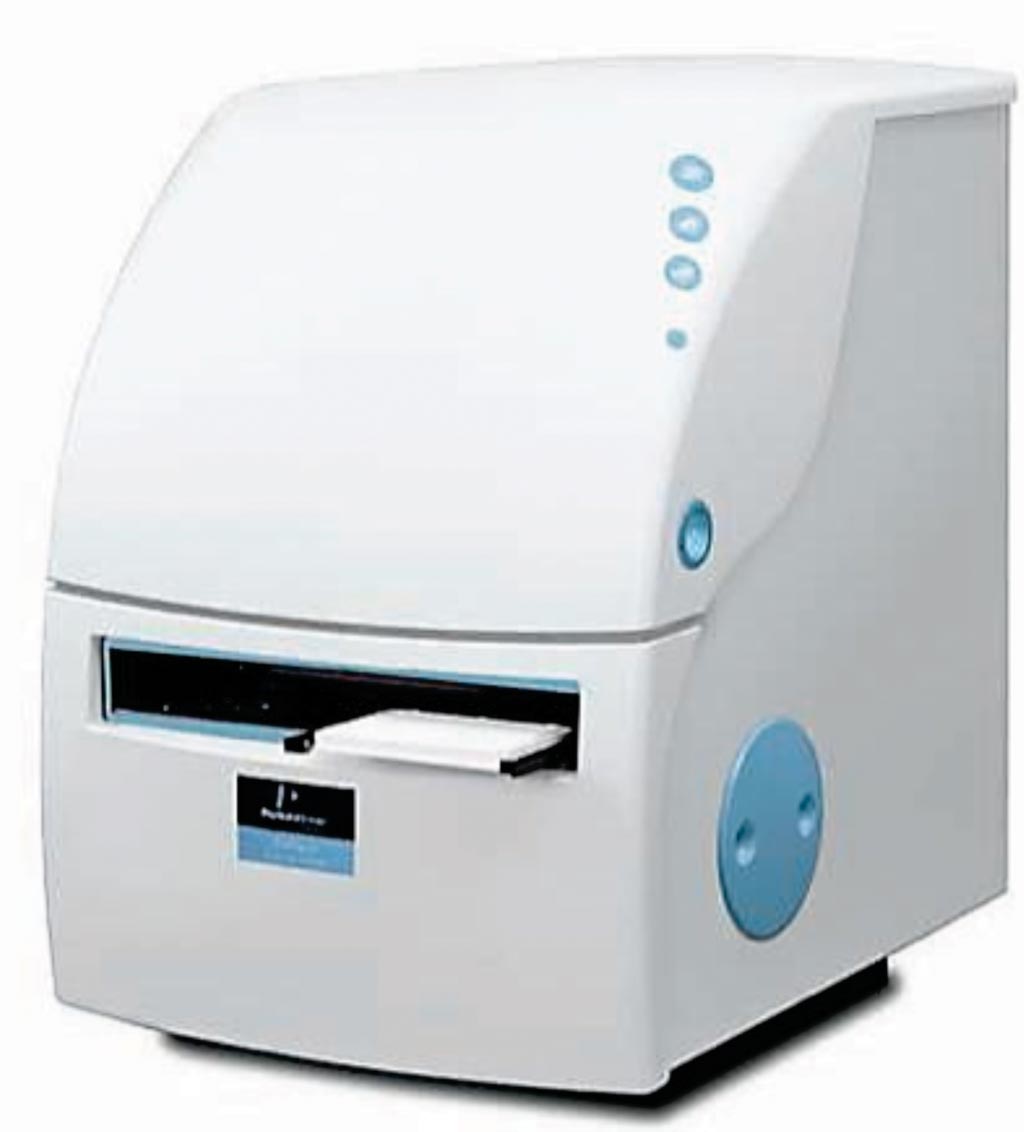Homogeneous BTK Occupancy Assay Developed
By LabMedica International staff writers
Posted on 03 Aug 2018
Bruton’s tyrosine kinase (BTK), a member of the tyrosine kinase expressed in the hepatocellular carcinoma (TEC) family of cytoplasmic protein tyrosine kinases, was initially identified as the pathogenic protein in X-linked agammaglobulinemia, a human primary immune deficiency disease.Posted on 03 Aug 2018
BTK promotes development and maturation of B cells through activation of cell cycle regulators and differentiation factors, and directs B-cell proliferation and survival through regulation of apoptosis. With its central role in B Cell Receptor (BCR) signaling and survival, BTK is an oncogenic driver in human chronic lymphocytic leukemia (CLL) and activated B-cell-like subtype of diffuse large B-cell lymphoma (ABC-DLBCL).

Image: The EnVision 2105 multimode plate reader provides exceptional speed, ultra-high throughput, and maximum sensitivity across all detection technologies (Photo courtesy of PerkinElmer).
Scientists from Gilead Sciences, Inc, (Foster City, CA, USA) developed a novel duplex homogeneous BTK occupancy assay based on time-resolved fluorescence resonance energy transfer (TR-FRET) to measure free and total BTK levels in a multiplexed format. The assay can measure target engagement in peripheral blood mononuclear cells (PBMCs) and in lymph node and bone marrow samples. The assay provides accurate, quantitative assessment of BTK occupancy and currently is in use in ongoing tirabrutinib clinical studies.
The assay takes advantage of the dual wavelength emission of terbium conjugated anti-BTK antibody to serve as the energy donor for two fluorescent energy acceptors with distinct excitation and emission spectra: G2-streptavidin-bound biotinylated tirabrutinib and detects free BTK and D2-coupled second anti-BTK antibody that binds to a different BTK epitope and detects total BTK. Additionally, the use of a common fluorescence donor serves to normalize the detection of total and free BTK with respect to each other.
The assay is characterized and quantified using full-length purified recombinant human BTK protein and PBMCs derived from healthy volunteers and patients with CLL. The authors demonstrate the assay's utility using cells derived from samples from patients with CLL and DLBCL. The team used a multiplexed assay for free and total BTK carried out on 384-well assay plates. The processed plates were read on EnVision laser-based reader.
The TR-FRET BTK occupancy assay was validated using purified human recombinant full-length BTK (rBTK) and cell extracts. Based on a set of six studies with quadruplicate samples using rBTK, the assay dynamic range was 9.75 to 312 ng/mL free and total BTK. The lower and upper limits of quantitation were 12 ng/mL (limit of detection 6 ng/mL) and 166 ng/mL, respectively. Variability in free and total BTK levels within the full assay dynamic range was very low, with interassay coefficient of variation (CV) ≤6% for free BTK and ≤3% for total BTK. PBMCs in patients with B-cell malignancies can show very high BTK levels due to enrichment of B cells.
The authors concluded that they had developed, validated, and qualified a TR-FRET-based homogeneous duplex assay to measure BTK occupancy in PBMCs from tirabrutinib clinical studies. Utility of the assay also was demonstrated using cells derived from lymph node and bone marrow samples from patients with CLL and DLBCL. The study was published on July 6, 2018, in the journal SLAS DISCOVERY: Advancing Life Sciences R&D.
Related Links:
Gilead Sciences













